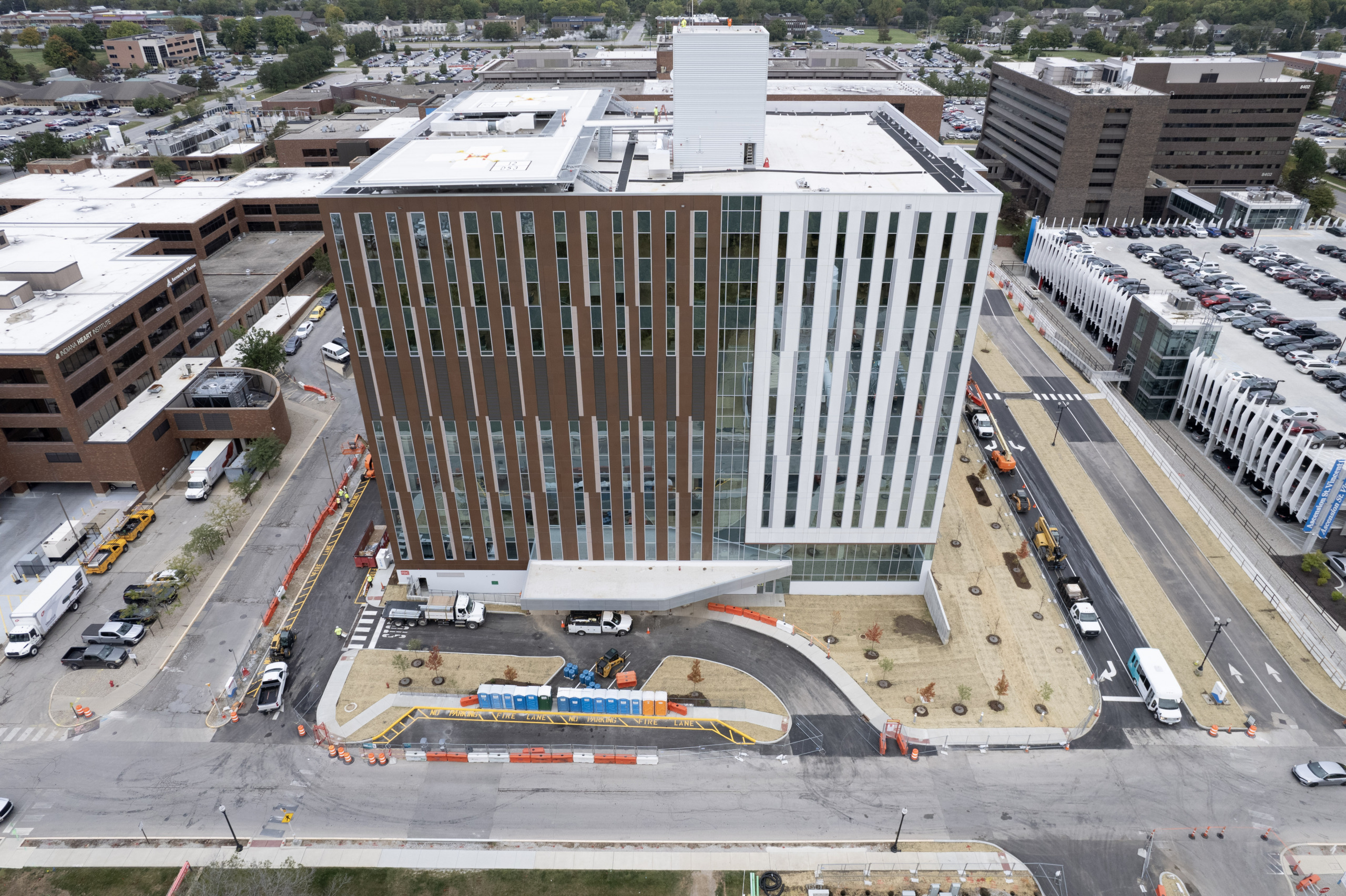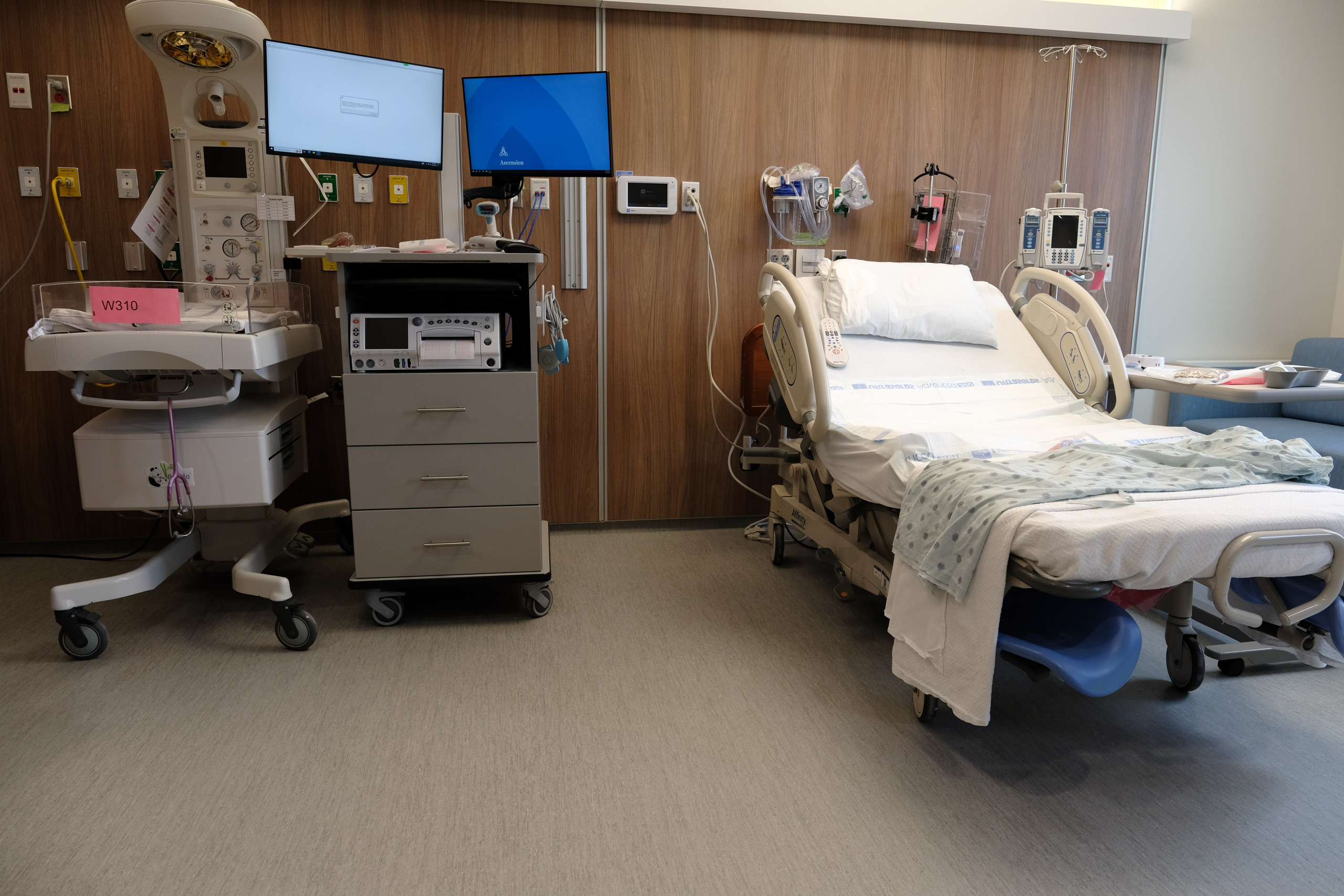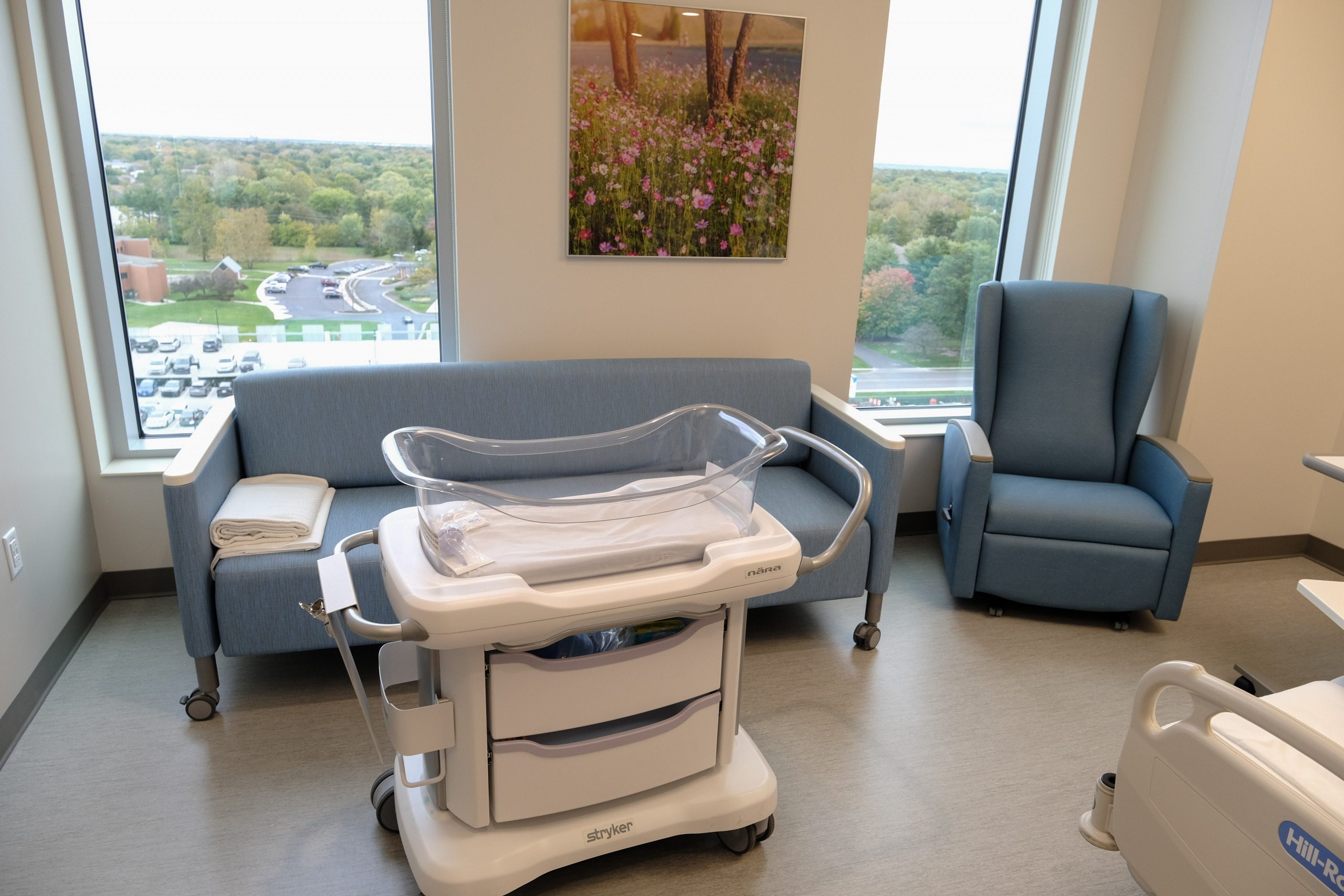Subscriber Benefit
As a subscriber you can listen to articles at work, in the car, or while you work out. Subscribe Now
Two years ago, the site was a parking lot. Now, after more than three years of planning and construction, it is about to open as Indiana’s newest maternity hospital, an eight-story building with 30 maternity suites and 109 neonatal intensive care unit rooms.
Ascension St. Vincent provided a sneak peak Monday of its Women and Infants Hospital, a $200 million project on the south side of its flagship campus on West 86th Street in Indianapolis. The hospital is scheduled to open Nov. 16.
The women’s hospital is one of only two Level IV perinatal health care centers in the state, a designation that represents the highest level of care. (The other is Riley Hospital for Children, owned by Indiana University Health.)

The new, 268,000-square foot hospital will replace the current Women’s Hospital, which is three blocks away on Township Line Road, off of the hospital campus. Ascension has been using the older building for about two decades after buying it in 2000 from health insurer Humana, which operated it as a for-profit hospital.
The older hospital “is adequate but a little bit dated,” said Dan Parod, president of Ascension St. Vincent’s central region. The older building has 97 neonatal beds that are laid out in ward style with 36 beds in the largest ward.
By contrast, the new hospital will feature all-private rooms for parents of premature newborn infants, with couches that pull out into beds to stay around-the-clock if they wish. It includes “couplet” rooms to allow both moms and their babies to receive care together, even if the baby needs neonatal intensive care.
Additional services include inpatient, outpatient and virtual lactation services, and two rooms where moms can labor in a tub. The new hospital will have two helipads on the rooftop. It will also have a pediatric emergency department
The hospital is connected to both Ascension St. Vincent Hospital and the Peyton Manning Children’s Hospital, meaning if mothers have emergencies or distress, everything is connected on campus.

The hospital is designed to handle 3,000 maternal deliveries a year, the most of any Ascension hospital in Indiana. Its Carmel hospital is in second place, with about 2,300 deliveries a year.
The new hospital is designed to handle routine deliveries (usually 40 weeks into a pregnancy) as well as high-risk deliveries of premature births (down to 22 weeks).
“We have babies in the NICU for sometimes up to a year,” said Dr. Melissa Leedy, medical director of the NICU unit. “Imagine if you were that family and you didn’t have a place to stay with your baby, and so having that private room with a couch that pulls out into a bed with really private space.”
Ascension St. Vincent said the new hospital is also meant to address Indiana’s high maternal and infant mortality rates, one of the highest in the nation.
“As you know, it’s not great,” said Julie Schneiders, Ascension St. Vincent’s vice president for women’s health. “So anything we can do to have all the services in one place–and that’s what going to happen by us coming back to this campus.”
The new hospital, at 165 feet tall, features floor-to-ceiling windows with views from the upper floors that extend for miles.
The hospital used 1,650 tons of steel and 12,000 yards of concrete hauled in on 1,350 trucks during construction.
The project was announced in 2021, during the height of the COVID-19 pandemic, and as the years went by, even some physicians were uncertain if or when the project would be completed.
“I was skeptical,” said Dr. Troyna Hawkins, vice chair of Ascension St. Vincent’s OB-GYN department. “It was starting to seem like it wasn’t going to happen. And then, all of a sudden, you start seeing the ground get broken and cement trucks are coming, and steel beams are getting signed, and we’re here. It happened.”


Please enable JavaScript to view this content.

But will they staff it with enough nurses who can actually have time to spend with the patients? Will the computers actually be up to date or several years behind like they are at other Ascension hospitals?
Why don’t they spend money on things that matter? Their communication also leaves a lot to be desired. They keep sending meds to the wrong pharmacy and bill the wrong insurance company. And I’m supposed to be excited about a new hospital.
They can’t even run their current ones appropriately!!!!!
Pictures don’t look like anything special. Just regular sterile, machine filled, boring hospital rooms.